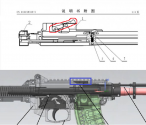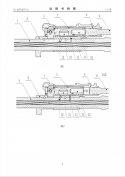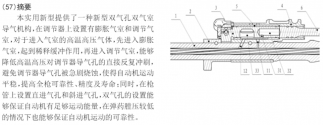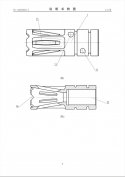I believe the full document that contains those diagrams describes a retaining mechanism for the firing pin. If you know the AR15, it has an elastic cotter pin going across the bolt carrier to keep the firing pin from sliding out the back. The document states that this piece on the AR15 can loose its elasticity and fall out over time. So a new mechanism was proposed, where another spring loaded plunger will keep that firing pin retaining pin in place, and you will need to use a punch to remove it. I think we can assume that this mechanism is intended to be applied to the 191 family, but since it's only a patent document, we can't determine if it's actually implemented without seeing a photo of a physical bolt carrier group.Can you explain this? I don't know enough gun knowledge to understand.
Another info that can be derived from these diagrams (even though they're not mentioned in the document) is that the 191 has a spring loaded lever (circled in red) that keeps the cam pin from rubbing against the cam track during the closing stroke of the bolt carrier. Basically, this lever keeps the bolt in the unlocked position until the bolt reaches the front-most position, where a metal piece in the receiver (circled in blue) depresses the lever, allowing the bolt to lock.















